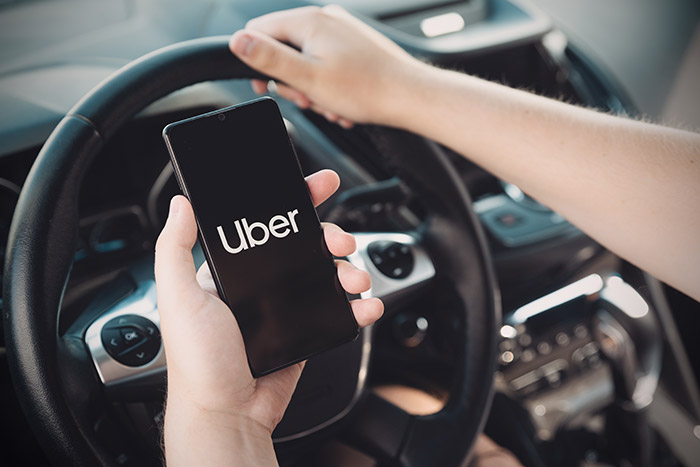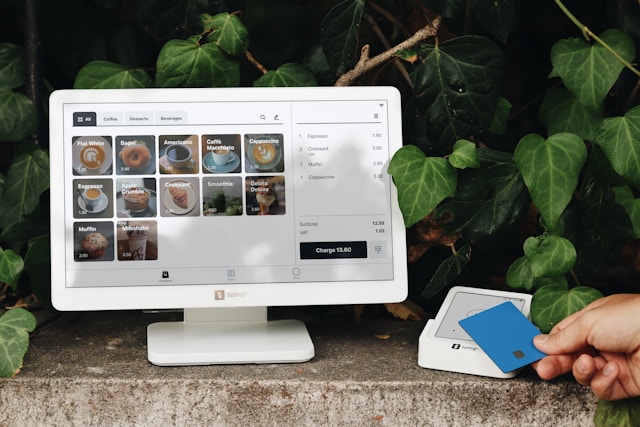As of May 27, 2025, Uber remains a dominant force in the ride-sharing industry, connecting millions of drivers and riders globally. However, concerns about privacy practices, particularly how Uber accesses drivers’ phones, have persisted over the years. Historical reports and user experiences suggest that Uber has, at times, accessed sensitive data on drivers’ devices—sometimes without their explicit knowledge or consent. While Uber’s official policies emphasize transparency, incidents like the 2017 controversy over an iPhone backdoor and ongoing discussions about data collection practices raise questions about the company’s methods. This article examines how Uber may have accessed drivers’ phones, the mechanisms involved, the impact on drivers, and the broader implications for privacy in the gig economy.
Mechanisms of Accessing Drivers’ Phones
Uber’s ability to access drivers’ phones primarily stems from the permissions granted through its Driver app, which is essential for drivers to accept rides, navigate, and communicate with riders. When drivers install the app, they are required to grant permissions such as access to location, camera, microphone, and storage, which are standard for ride-sharing functionality. However, historical reports indicate that Uber has occasionally exploited these permissions beyond what drivers might expect. In 2017, a post on X by @profgalloway highlighted a significant incident where Apple had reportedly given Uber access to an iPhone backdoor. This allowed Uber to record users’ screens and access personal data without their knowledge, a capability known as “screen scraping.” While this incident primarily affected riders, it raised broader concerns about Uber’s data practices, including how it might handle drivers’ information.
For drivers, the app’s access to phone sensors—such as accelerometers and gyroscopes—enables Uber to monitor driving behavior, like speed and braking patterns, to assess safety. According to Uber’s Community Guidelines, this data can be used to investigate reports of unsafe driving, potentially leading to account deactivation. While this monitoring is disclosed in Uber’s terms, some drivers may not fully understand the extent of data collection, such as continuous location tracking even when the app is not actively in use. Additionally, the app’s integration with Real-Time ID Check, which requires drivers to submit selfies to verify their identity, involves camera access that could theoretically be used to collect more data than necessary. The lack of clear, granular control over these permissions means drivers often unknowingly consent to broad data access, raising questions about transparency and consent.
Incidents and Evidence of Unauthorized Access
The 2017 iPhone backdoor incident, while primarily rider-focused, set a precedent for concerns about Uber’s access to device data. The backdoor, which Apple later revoked, allowed Uber to capture screen activity, potentially exposing sensitive information like messages, photos, or banking details. Although there’s no direct evidence from that incident targeting drivers, the capability suggested Uber could similarly access drivers’ devices if desired. More directly, drivers have reported instances where Uber’s app behavior seemed intrusive. For example, posts on platforms like Quora and Reddit over the years have described drivers noticing unexpected app activity, such as the camera activating during Real-Time ID Checks without clear notification, or location tracking continuing after logging off.
Uber’s deactivation policies provide further insight into its data access. The company uses phone sensor data to detect unsafe driving or account sharing, as outlined in its Deactivations page. While this is framed as a safety measure, drivers may not realize that their phone’s sensors are being monitored continuously, even during personal use, if the app remains active in the background. Additionally, Uber’s ability to remotely deactivate accounts suggests a level of control over the driver’s device, potentially allowing the company to access logs or other data during investigations without explicit driver consent. These practices, while not illegal, highlight a lack of transparency that can make drivers feel their privacy is being violated.
Impact on Drivers
The impact of Uber’s access to drivers’ phones without their full knowledge is multifaceted, affecting their privacy, autonomy, and trust in the platform. Privacy-wise, drivers risk having personal data—such as their location, driving habits, or even unintended camera access—collected and stored without clear boundaries. This is particularly concerning given Uber’s history of data breaches, such as the 2016 incident where 57 million users’ data was compromised. If drivers’ personal information is accessed without their knowledge, it could be vulnerable to similar breaches, exposing them to risks like identity theft or harassment.
From an autonomy perspective, constant monitoring can create a sense of surveillance, eroding drivers’ sense of independence. For instance, knowing that phone sensor data might lead to deactivation for unsafe driving—without clear thresholds or appeal processes—can pressure drivers to alter their behavior even off-duty, fearing repercussions. This surveillance culture is evident in Uber’s policies on account sharing and Real-Time ID Checks, where drivers are penalized for actions like letting someone else use their account, detected through device data. On X, some drivers have expressed frustration, with sentiments like “Uber tracks everything, even when I’m not working,” reflecting a broader unease about invasive oversight.
Trust is another casualty. Incidents like the 2017 backdoor and ongoing concerns about app permissions have damaged Uber’s reputation among drivers, many of whom rely on the platform as their primary income source. Without clear communication about what data is collected and how it’s used, drivers may feel exploited, especially since they have little bargaining power as independent contractors. This lack of trust can lead to reduced driver retention, as some may opt for competing platforms like Lyft, which have faced similar scrutiny but have made strides in transparency by 2025.
Broader Implications for Privacy in the Gig Economy
Uber’s practices reflect a larger issue in the gig economy: the tension between operational efficiency and individual privacy. Ride-sharing platforms rely on extensive data collection to ensure safety, optimize operations, and maintain accountability, but this often comes at the expense of workers’ rights. Drivers, as independent contractors, lack the protections afforded to traditional employees, such as robust data privacy policies or union advocacy. This power imbalance allows companies like Uber to implement invasive data practices with little pushback, setting a precedent for other gig platforms.
The 2017 incident also underscores the role of tech giants like Apple in enabling such practices. By granting Uber access to a backdoor, Apple highlighted how device manufacturers can facilitate privacy violations, often without users’ knowledge. While Apple revoked this access, the incident raised questions about how often similar backdoors exist and whether they could be exploited again, especially for drivers whose devices are central to their work. In 2025, with increasing regulatory scrutiny—like the EU’s AI Act and California’s updated privacy laws—there’s growing pressure on companies to prioritize transparency, but enforcement remains inconsistent, leaving gig workers vulnerable.
Moreover, the normalization of constant monitoring in the gig economy could desensitize workers to privacy invasions, eroding expectations of personal autonomy. If drivers accept that their phones are always being accessed, this mindset could spill over into other industries, where employers might adopt similar tactics under the guise of safety or productivity. This trend is particularly concerning in 2025, as AI-driven surveillance tools become more sophisticated, potentially allowing companies to extract even more granular data from devices without explicit consent.
Challenges and Ethical Concerns
One of the primary challenges in addressing Uber’s access to drivers’ phones is the lack of transparency. While Uber’s privacy policies outline general data collection practices, they often use vague language, leaving drivers unclear about specifics—like how long data is retained or whether it’s shared with third parties. This opacity makes it difficult for drivers to make informed decisions about their participation on the platform. Additionally, the technical complexity of app permissions means that many drivers may not fully understand what they’re consenting to, especially if they lack tech literacy.
Ethically, Uber’s practices raise questions about consent and exploitation. Accessing a driver’s phone without clear, explicit notification—such as during background sensor monitoring—violates the principle of informed consent, a cornerstone of ethical data practices. This is particularly problematic given the power dynamics at play: drivers, as gig workers, often feel compelled to accept these terms to earn a living, leaving them with little choice but to surrender their privacy. Furthermore, the potential for data misuse, such as profiling drivers for profitability rather than safety, poses ethical risks, especially if such profiling leads to discriminatory deactivation practices.
Another challenge is the regulatory lag. While laws like the EU’s GDPR and California’s CCPA have introduced stricter data protection rules, enforcement in the gig economy remains spotty. Uber has faced fines in the past—such as a $148 million settlement in 2018 for the 2016 data breach—but these penalties often fail to address the root issue of invasive data collection. In 2025, with gig workers increasingly advocating for better rights, there’s a growing call for legislation that specifically protects independent contractors’ privacy, but progress is slow, leaving drivers exposed to ongoing risks.
Opportunities for Improvement and Advocacy
The concerns surrounding Uber’s access to drivers’ phones present opportunities for improvement and advocacy in 2025. First, Uber could enhance transparency by providing drivers with detailed, user-friendly dashboards showing exactly what data is collected, how it’s used, and how long it’s stored. Implementing granular permission controls—allowing drivers to opt out of non-essential data collection, like background location tracking—would also empower them to protect their privacy without sacrificing functionality.
Advocacy groups, such as the Gig Workers Rising coalition, could play a pivotal role in pushing for change. By organizing drivers to demand better privacy protections, these groups can pressure Uber to adopt more ethical practices. In 2025, with the gig economy under increasing scrutiny, such advocacy could gain traction, especially if paired with legal action. For instance, class-action lawsuits focusing on privacy violations could force Uber to reform its data practices, setting a precedent for the industry.
Technological solutions also offer promise. Independent developers could create tools that monitor app behavior, alerting drivers to suspicious activity like unauthorized camera access or excessive data collection. Open-source privacy apps, which have gained popularity by 2025, could be tailored for gig workers, helping them safeguard their devices while working. Additionally, regulators could incentivize companies to adopt privacy-by-design principles, ensuring that apps like Uber’s are built with minimal data collection as a default, reducing the risk of overreach.
Conclusion
Uber’s history of accessing drivers’ phones without their full knowledge, exemplified by incidents like the 2017 iPhone backdoor and ongoing concerns about app permissions, highlights significant privacy challenges in the gig economy as of May 2025. While the company’s data practices enable safety and operational efficiency, they often come at the cost of drivers’ autonomy and trust, with mechanisms like sensor monitoring and Real-Time ID Checks raising ethical questions about consent. The broader implications—normalizing surveillance and eroding privacy expectations—underscore the need for transparency, regulation, and advocacy. By addressing these issues through better policies, technological solutions, and driver empowerment, Uber can rebuild trust and set a higher standard for privacy in the gig economy, ensuring that drivers’ rights are protected in an increasingly data-driven world.
Key Aspects of Uber’s Phone Access Concerns in 2025
| Aspect | Details | Impact |
|---|---|---|
| Mechanisms | App permissions, sensor monitoring, ID checks | Continuous data collection, often undisclosed |
| Incidents | 2017 iPhone backdoor, camera/location concerns | Potential access to personal data, trust issues |
| Driver Impact | Privacy loss, surveillance, trust erosion | Reduced autonomy, fear of deactivation |
| Broader Issues | Gig economy surveillance, regulatory gaps | Normalizes invasive practices, privacy risks |








